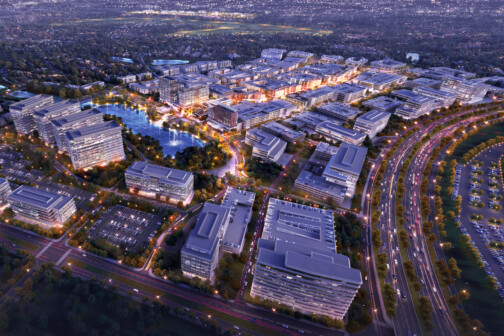Dallas looked a lot different 10 years ago. Klyde Warren Park was still in its planning stages, the Omni Hotel was still four years away from opening its doors, and Thom Mayne was just announced as the designer of the new Perot Museum in Victory Park. I think 2018 feels a lot different than 2008, and it’s not just the landscape in Dallas that has changed.
 The high level of north Texas commercial real estate activity and recent stock market volatility has been giving many people flashbacks to 2008 and the great recession. Fortunately, the economy is stronger than it was 10 years ago and the factors that led to the great recession are not in place today, especially in Dallas.
The high level of north Texas commercial real estate activity and recent stock market volatility has been giving many people flashbacks to 2008 and the great recession. Fortunately, the economy is stronger than it was 10 years ago and the factors that led to the great recession are not in place today, especially in Dallas.
From my perspective, I’ve been through a few of these crashes and corrections, but 2008 doesn’t feel the same as 2018 for a few reasons. The last time around, prices for commercial real estate assets in the Dallas area had exceeded reasonable underwriting standards. As a result, Westmount wasn’t winning many deals and we even stopped bidding them. Today, we continue to see deals at prices that seem to make sense, even though it’s highly competitive. We also aren’t seeing very much in terms of delinquencies and bankruptcies, and our tenants are making money and investing in their businesses.
There has been a lot of talk about rising interest rates and their effect on cap rates. While cap rates are influenced by rising interest rates, many Dallas market deals still offer reasonable pricing. We also know that cap rates don’t always move in lock-step with interest rates.
Westmount is not the only party seeing Dallas differently. Institutional investors view North Texas differently in 2018 than they did in 2008. Dallas has stepped into a different league in the national and international investment view. Dallas has moved up the ladder from where it was previously and is no longer viewed as a boom/bust town, as it was in earlier times.
In Dallas, the employment growth is still stronger than dirt (it’s the best in the country according to the Bureau of Labor and Statistics). The Federal Reserve Bank of Dallas is forecasting employment growth to be at 2.8 percent in 2018. Companies are hiring, growing and moving to North Texas and they show no signs of slowing down.
The Dallas multifamily, industrial, and office sectors also look better today than they did in 2008.
Multifamily
Even though there are many new multifamily buildings coming online in the near future, the rent growth in Dallas is still there. It’s amazing that Dallas has kept up this pace. Typically growth starts to slow down after several years of fast growth, but Dallas’ development rate continues to be phenomenal. The absorption rate for multifamily also remains positive for all asset classes in both urban and suburban communities.
In the multifamily sector, traditionally, the most common reason residents would stop renting would be to purchase a house. We aren’t seeing this trend nearly as much today, because it’s a lot harder to qualify for a mortgage. Since the great recession, banks are requiring more credit and a larger down payment to purchase a house, which can be barriers for a renter looking to purchase a home.
Industrial
In 2017, Dallas absorbed 23.6 million square feet of industrial space. Our tenants in the industrial space are expanding, renewing their contracts and paying rent increases, which are contradictions to what we saw in 2008.
As an industrial market, Dallas is now considered “blue chip” for institutional and foreign investors. It’s also regularly considered one of the top five industrial markets in the U.S., which is incredible given that Dallas is landlocked and doesn’t rely on a port to ship goods by water.
Office
As with other sectors, the Dallas area office market feels solid. The leading indicator for office space demand is the job rate for the professional services category, which accounts for 62 percent of office sector employment. Last year, DFW added 90,000 jobs and 37 percent of those can be attributed to the office sector, which includes business and professional services, information/technology and financial activities. This increase is from both corporate relocations (like Toyota and State Farm) and organic growth from existing businesses.
The continued growth in the Dallas Central Business District is largely due to extensive renovation projects like The Statler Hotel and Ross Tower. Many 10-year leases were signed in 2008 and 2009 during the downturn and are in process of renegotiation, which could spur more redevelopment.
We are actively pursuing office assets in Dallas, believing that job growth will continue for years.
Ten years ago, the underpinnings of the economy were not the same as they are today. In addition to extensive third party data, we also have vast proprietary data allowing us to see what’s going on in the marketplace without relying on outside reports and interpretations. In 2018, we see a healthy banking system, a great deal of money chasing every opportunity and fundamentally sound deals which can still be found. When these things change, then I’ll have a different view.
Cliff Booth is CEO of Westmount Realty Capital LLC.






